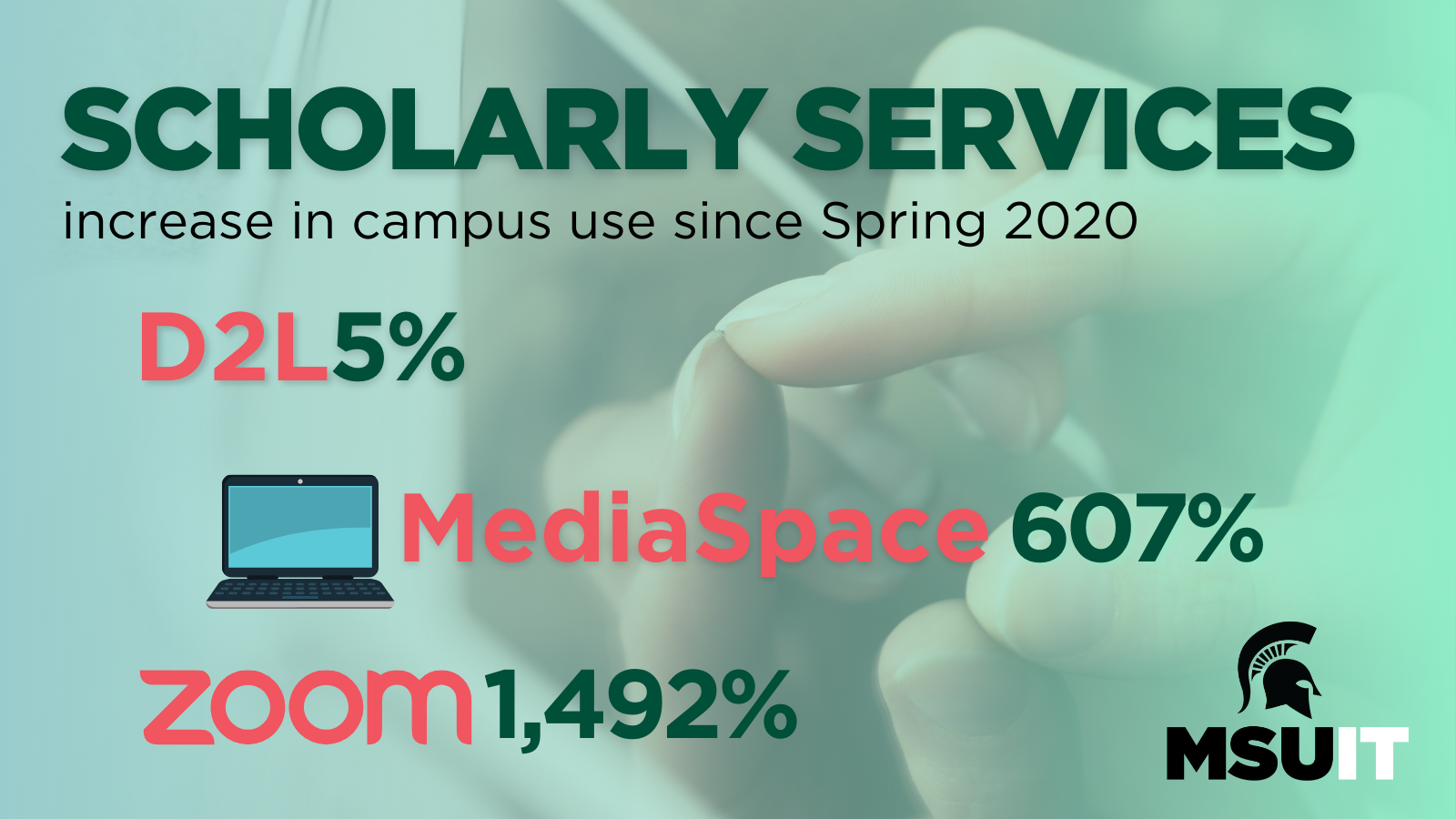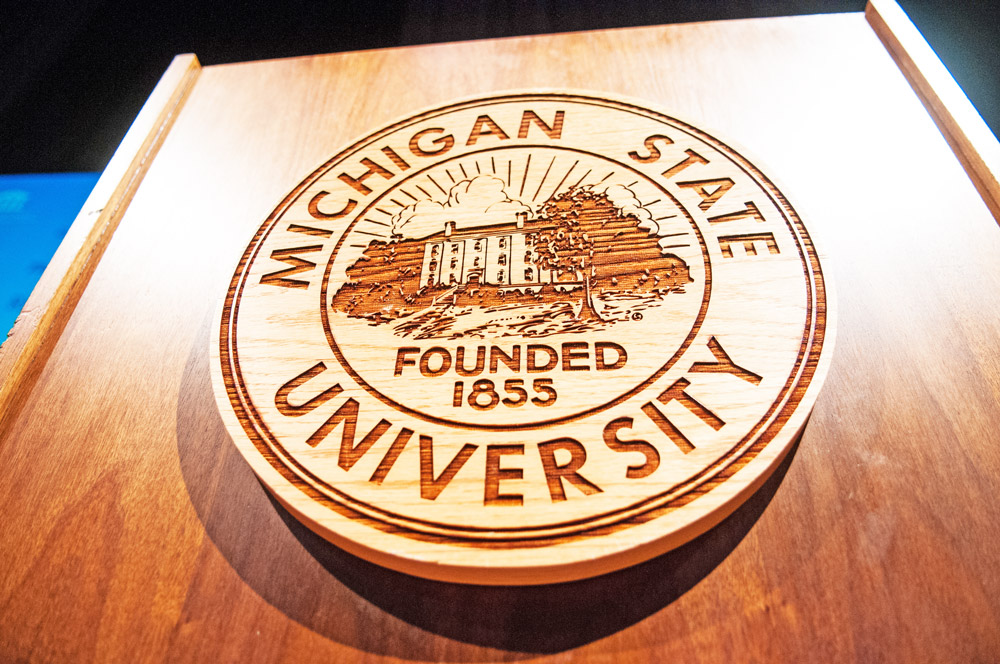 Few times in history has the educational landscape evolved so rapidly as it has done on the MSU campus the past two years. The need to temporarily transition to fully remote teaching and learning has made way for a hybrid environment that may prove to be the future of life on college campuses.
Few times in history has the educational landscape evolved so rapidly as it has done on the MSU campus the past two years. The need to temporarily transition to fully remote teaching and learning has made way for a hybrid environment that may prove to be the future of life on college campuses.
At the forefront of that evolution is the Scholarly Services team, a part of MSU IT’s Educational Technology Department.
In the early onset of the pandemic, Scholarly Services saw the use of the primary tools it manages and supports increase astronomically.
The number of Zoom meetings held among the MSU population increased by 1,492%. In addition, the amount of content uploaded to MediaSpace increased by 607%.
Along with D2L and GoogleApps, Zoom and MediaSpace continue to provide the technology necessary for students and educators to continue supporting student success.
“We’ve been supporting the software that has been the educational backbone since the pandemic struck,” said Drew Beach, Scholarly Services manager. “Over the past two years, we’ve provided all of the tools educators use to deliver their course materials and offer an educational experience to our students.”
Educators now host lectures more frequently on Zoom and store those lectures on MediaSpace for students to access asynchronously.
Providing support for services so widely used on campus has provided its own set of challenges. A team of just five full-time staff, Scholarly Services answers support tickets to help educate and troubleshoot faculty, staff, and students’ problems with the technology.
“I can’t speak enough for my team, which has done all this fantastic work, and never let it get them down,” Beach said. They do a great job of supporting each other, identifying when and where breaks are needed.”
To aid in preparing students, faculty, and staff for technology becoming more widely used, the Educational Technology department has increased the number of training courses available.
“We are more proactive and forward-thinking in how we continue to offer proper solutions to meet the expectations of our students,” Beach said. “Educators have learned new and different approaches to technology that can supplement their traditional methods to make their lives easier.”
According to Beach, dedication to the university’s mission is apparent among the team.
“It is easy for us to connect the dots and how the work we’re doing is helping that cause,” Beach said.


